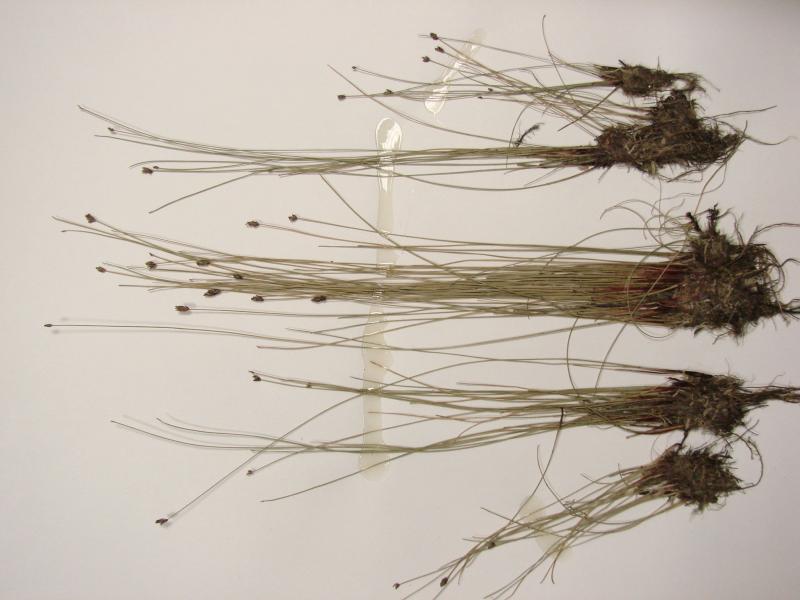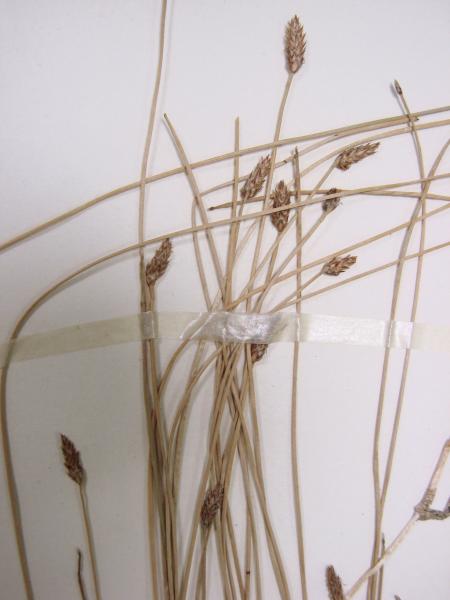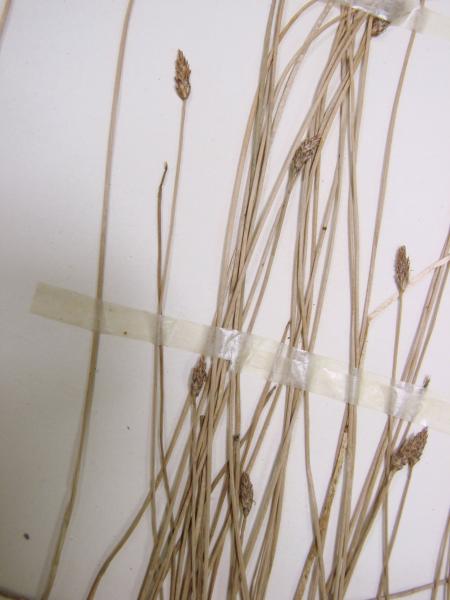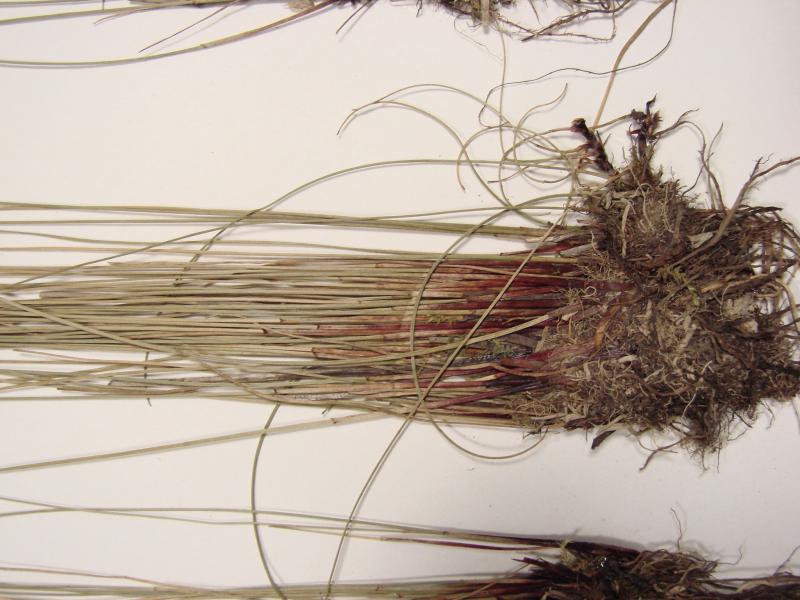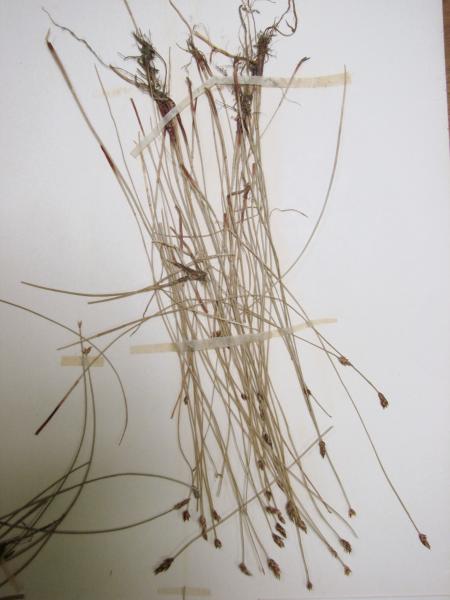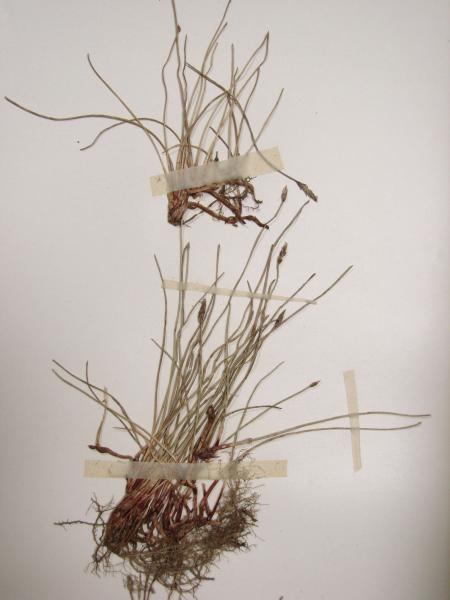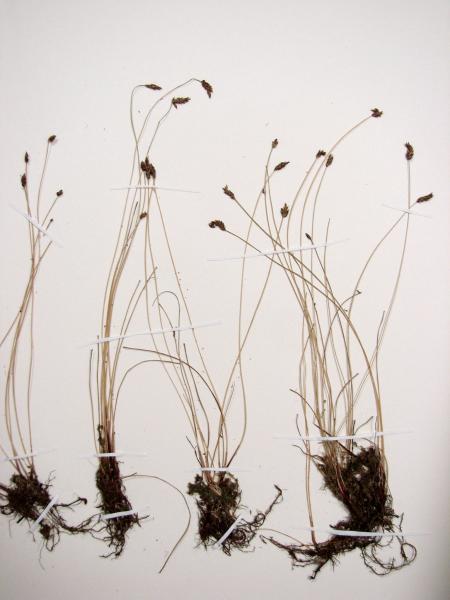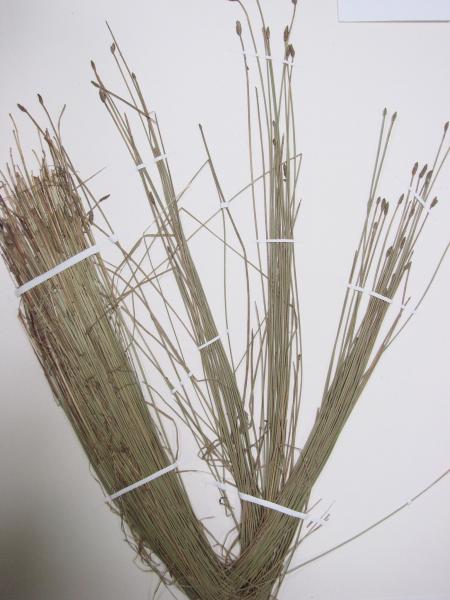Single-glumed Spike Rush
Eleocharis uniglumis (Link) J.A. Schultes
- Class
- Monocotyledoneae (Monocots)
- Family
- Cyperaceae (Sedge Family)
- State Protection
- Threatened
Listed as Threatened by New York State: likely to become Endangered in the foreseeable future. For animals, taking, importation, transportation, or possession is prohibited, except under license or permit. For plants, removal or damage without the consent of the landowner is prohibited.
- Federal Protection
- Not Listed
- State Conservation Status Rank
- S2
Imperiled in New York - Very vulnerable to disappearing from New York due to rarity or other factors; typically 6 to 20 populations or locations in New York, very few individuals, very restricted range, few remaining acres (or miles of stream), and/or steep declines.
- Global Conservation Status Rank
- G5
Secure globally - Common in the world; widespread and abundant (but may be rare in some parts of its range).
Summary
Did you know?
This is one of the few Eleocharis species in New York that can grow in salt water. Its variety name means "lover of salt."
State Ranking Justification
There are seven existing populations and just over half of them are in good to excellent condition. There are 16 historical occurrences but many of these are probably gone although all of them should be surveyed again. Since this species is difficult to identify and is often overlooked there may be much more of it than is currently known.
Short-term Trends
The short-term trend seems stable as most populations have been about the same size when resurveyed.
Long-term Trends
The long-term trend is probably declining even though many of the historical occurrences have not been checked. That's because many of them are in areas that have seen much human activity and a few of them are even considered extirpated.
Conservation and Management
Threats
Populations in high marsh areas are being degraded by runoff and by the invasion of phragmites.
Conservation Strategies and Management Practices
Its habitat should be protected from the invasion by phragmites and from excessive and polluted runoff. Keeping high salt marsh in excellent condition is desirable.
Research Needs
There needs to be more research into the habitat preference of this species and why it prefers only a small portion of a larger habitat. Pheonology and taxonomic studies could be done to devise a better search image so populations could be located easier.
Habitat
Habitat
In New York this species has been collected in a variety of habitat types, all in or near salty or at least brackish water, and most at the margin of fluctuating shorelines. So long as these basic requirements are met, it appears to tolerate soil substrates ranging from peaty to mucky to sandy (New York Natural Heritage Program 2007). Mainly of coastal salt marshes (Gleason & Cronquist 1991). Saline or brackish shores (Fernald 1970).
Associated Ecological Communities
- Brackish tidal marsh*
(guide)
A marsh community that occurs where water salinity ranges from 0.5 to 18.0 ppt, and water is less than 2 m (6 ft) deep at high tide. The vegetation in a brackish tidal marsh is dense and dominated by tall grass-like plants.
- Coastal plain pond
(guide)
The aquatic community of the permanently flooded portion of a coastal plain pond with seasonally, and annually fluctuating water levels. These are shallow, groundwater-fed ponds that occur in kettle-holes or shallow depressions in the outwash plains south of the terminal moraines of Long Island, and New England. A series of coastal plain ponds are often hydrologically connected, either by groundwater, or sometimes by surface flow in a small coastal plain stream.
- Coastal plain pond shore
(guide)
The gently sloping shore of a coastal plain pond with seasonally and annually fluctuating water levels. Plants growing on the pond shore vary with water levels. In dry years when water levels are low there is often a dense growth of annual sedges, grasses, and herbs. Submerged and floating-leaved aquatic plants, such as fragrant waterlily and pondweeds, may become "stranded" on the exposed shore. In wet years when the water level is high only a few emergents and floating-leaved aquatics may be noticeable. T
- High salt marsh*
(guide)
A coastal marsh community that occurs in sheltered areas of the seacoast, in a zone extending from mean high tide up to the limit of spring tides. It is periodically flooded by spring tides and flood tides. High salt marshes typically consist of a mosaic of patches that are mostly dominated by a single graminoid species.
- Low salt marsh*
(guide)
A coastal marsh community that occurs in sheltered areas of the seacoast, in a zone extending from mean high tide down to mean sea level or to about 2 m (6 ft) below mean high tide. It is regularly flooded by semidiurnal tides. The mean tidal range of low salt marshes on Long Island is about 80 cm, and they often form in basins with a depth of 1.6 m or greater.
* probable association but not confirmed.
Associated Species
- Amaranthus cannabinus (salt marsh water-hemp)
- Anthoxanthum odoratum (sweet vernal grass)
- Bidens connata (purple-stemmed beggar-ticks)
- Bidens frondosa (devil's beggar-ticks)
- Carex lurida (sallow sedge)
- Cephalanthus occidentalis (buttonbush)
- Commelina communis (Asian dayflower)
- Cyperus bipartitus (shining flat sedge)
- Dichanthelium clandestinum (deer-tongue rosette grass)
- Distichlis spicata (salt grass)
- Dulichium arundinaceum
- Eleocharis acicularis (needle spike-rush)
- Epilobium coloratum (eastern willow-herb)
- Hibiscus moscheutos
- Hydrocotyle umbellata (many-flowered marsh-pennywort)
- Juncus gerardii
- Leersia oryzoides (rice cut grass)
- Limosella australis (Atlantic mudwort)
- Lindernia dubia
- Lythrum salicaria (purple loosestrife)
- Microstegium vimineum (Japanese stilt grass)
- Mikania scandens (climbing hempweed, climbing boneset)
- Panicum virgatum (switch grass)
- Persicaria punctata (dotted smartweed)
- Persicaria sagittata (arrow-leaved tear-thumb)
- Phragmites australis (old world reed grass, old world phragmites)
- Pluchea odorata (salt marsh-fleabane)
- Pontederia cordata (pickerelweed)
- Proserpinaca palustris (coastal marsh mermaid-weed)
- Salsola kali
- Schoenoplectus americanus (chair-maker's bulrush)
- Scirpus atrovirens (dark-green bulrush)
- Scirpus cyperinus (common wool-grass)
- Solanum dulcamara (bitter-sweet nightshade)
- Solidago sempervirens (northern seaside goldenrod)
- Spartina patens (salt-meadow cord grass)
- Symphyotrichum novi-belgii
- Thelypteris palustris
- Triadenum virginicum
Range
New York State Distribution
In New York Salt-marsh Spikerush is known from Long Island, New York City, and the Lower Hudson River north to Orange County. Historically it also was collected from inland salt meadows in the Finger Lakes region.
Global Distribution
Salt-marsh Spikerush is found in most of the Canadian Provinces (as well as in northern Eurasia), and south mostly along the Atlantic Coast from Maine to North Carolina. There are also populations inland in the Dakotas, Nebraska, and several southwestern states.
Identification Comments
General Description
Spikerushes consist of a simple stem (the leaves bladeless and inconspicuous), with the infloresence a solitary, many-scaled spikelet at the top of the stem. The perianth (sepals and petals), if present, is reduced to bristles. The base of the style is expanded (called a tubercle), and is usually persistent on the fruit (achenes). Eleocharis uniglumis var. halophila is perennial, growing from a rhizome and forming dense mats. The stems are 10 to 60 cm tall and only .2 to 1.5 mm wide. The spikelet is 5-10 by 2-3 (4)mm, coming to an acute point, with floral scales 1.8 to 2 mm wide. The flowers have from 0 to 4 perianth bristles the length of the achene or shorter.
Best Life Stage for Proper Identification
Fruiting specimens are needed to identify this species.
Similar Species
This species is difficult to distinguish from several other spikerushes. Habitat information may help. Eleocharis erythropoda has a spikelet with the fertile scales narrower (less than 1.8mm wide) and more closely appressed together. Eleocharis palustris (sensu stricta) and Eleocharis smallii may have wider culms (0.5-5 mm thick at summit of upper sheath) and the perianth bristles are commonly elongate (those of E. uniglumis var. halophila are the length of the achene or smaller).
Best Time to See
The fruits of Salt-marsh Spikerush are visible from July through mid-October.
- Fruiting
The time of year you would expect to find Single-glumed Spike Rush fruiting in New York.
Single-glumed Spike Rush Images
Taxonomy
Single-glumed Spike Rush
Eleocharis uniglumis (Link) J.A. Schultes
- Kingdom Plantae
- Phylum Anthophyta
- Class Monocotyledoneae
(Monocots)
- Order Cyperales
- Family Cyperaceae (Sedge Family)
- Order Cyperales
- Class Monocotyledoneae
(Monocots)
- Phylum Anthophyta
Additional Common Names
- Salt-marsh Spike Rush
- Spikerush
Synonyms
- Eleocharis uniglumis var. halophila Fern. & Brack.
Additional Resources
Best Identification Reference
Flora of North America Editorial Committee. 2002. Flora of North America, North of Mexico. Volume 23. Magnoliophyta: Commelinidae (in part): Cyperaceae. Oxford University Press, New York. 608 pp.
Other References
Crow, Garrett E. and C. Barre Hellquist. 2000. Aquatic and wetland plants of northeastern North America: A revised and enlarged edition or Norman C. Fassett's a manual of aquatic plants. Volume two angiosperms: Monocotyledons. The University of Wisconsin Press. Madison, Wisconsin. 456 pp.
Fernald, M.L. 1950. Gray's manual of botany. 8th edition. D. Van Nostrand, New York. 1632 pp.
Gleason, Henry A. and A. Cronquist. 1991. Manual of Vascular Plants of Northeastern United States and Adjacent Canada. The New York Botanical Garden, Bronx, New York. 910 pp.
Holmgren, Noel. 1998. The Illustrated Companion to Gleason and Cronquist's Manual. Illustrations of the Vascular Plants of Northeastern United States and Adjacent Canada. The New York Botanical Garden, Bronx, New York.
New York Natural Heritage Program. 2010. Biotics database. New York Natural Heritage Program. New York State Department of Environmental Conservation. Albany, NY.
New York Natural Heritage Program. 2024. New York Natural Heritage Program Databases. Albany, NY.
Weldy, T. and D. Werier. 2010. New York flora atlas. [S.M. Landry, K.N. Campbell, and L.D. Mabe (original application development), Florida Center for Community Design and Research http://www.fccdr.usf.edu/. University of South Florida http://www.usf.edu/]. New York Flora Association http://newyork.plantatlas.usf.edu/, Albany, New York
Links
About This Guide
Information for this guide was last updated on: January 18, 2008
Please cite this page as:
New York Natural Heritage Program. 2024.
Online Conservation Guide for
Eleocharis uniglumis.
Available from: https://guides.nynhp.org/salt-marsh-spike-rush/.
Accessed July 27, 2024.

